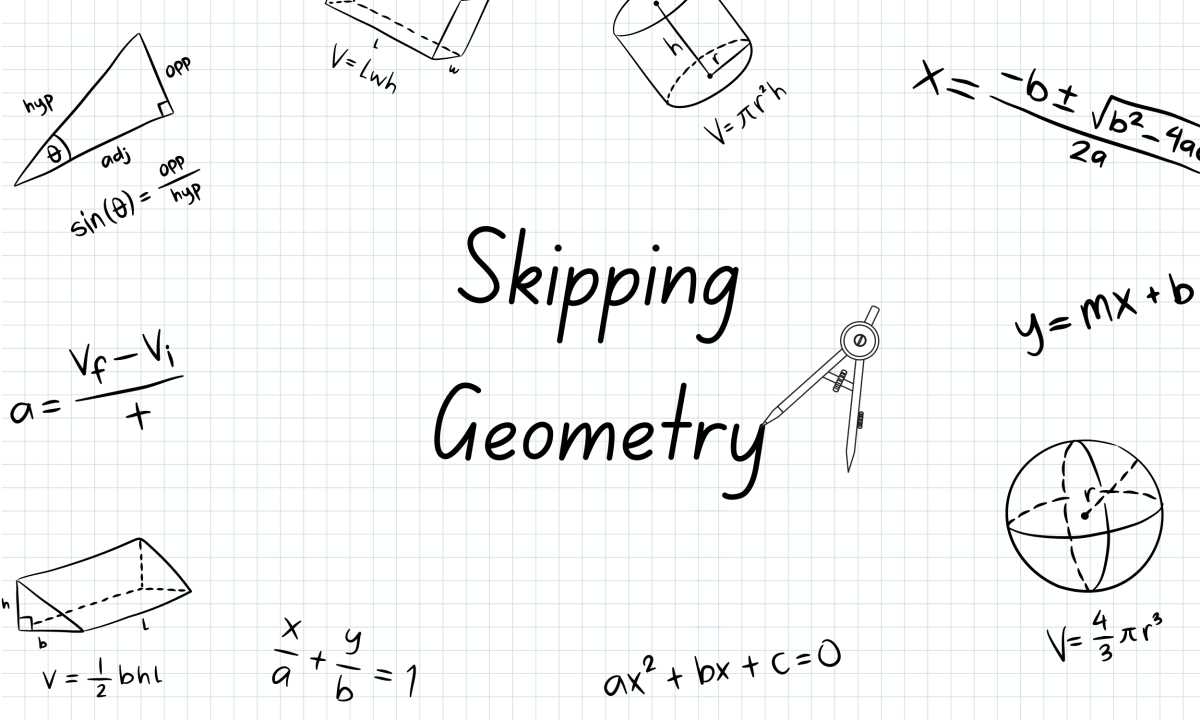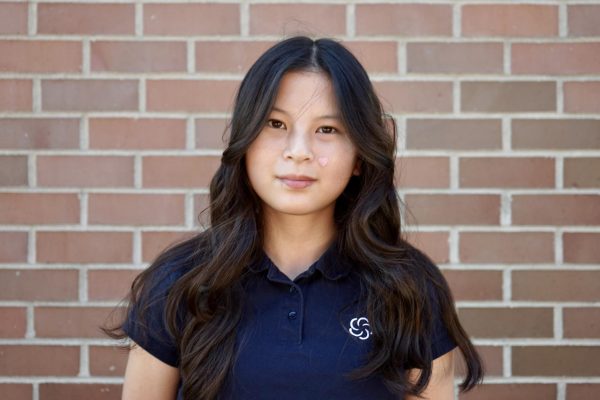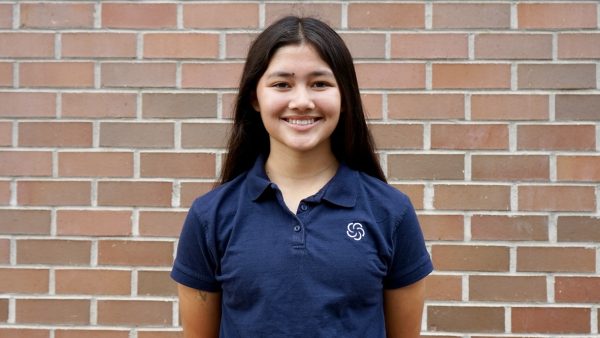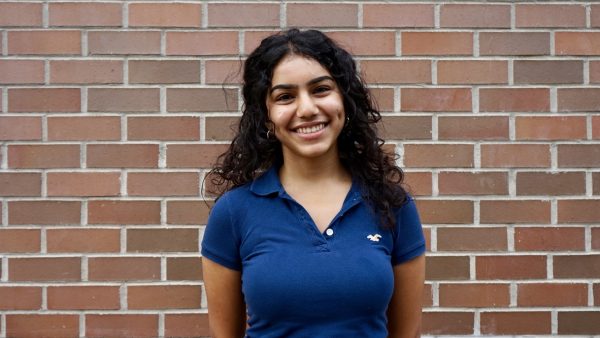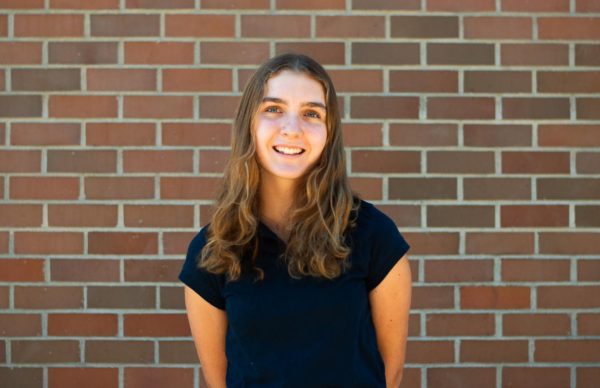“A student who has studied geometry outside of Castilleja, either at their middle school, in a summer or after school program, or independently, may petition to be exempted from taking Castilleja’s geometry course.”
Department Policy
Castilleja has opened the Geometry Exemption Policy to incoming ninth and 10th graders for the past few decades. This policy allows rising freshmen and sophomores to take the Geometry Exemption Exam (GEE) in order to skip geometry their sophomore year and go straight to Introductory Calculus—which most students take their junior year—instead. However, many students were unaware of this until the past few years, when discussion on this topic increased.
Math department lead Emily Landes has taught at Castilleja for the past six years. When she first arrived, the policy felt “established” and “intentional.”
According to Landes, the point of the Geometry Exemption Policy is to ensure students not only have the content knowledge of geometry but also the problem-strategizing skills that come with taking the class so that when they leave Castilleja, they have the appropriate thinking skills.
Landes said that the math department does not believe in “acceleration just for the sake of acceleration.” Students are not encouraged to take the exam without having “taken and excelled in a rigorous geometry course,” according to the Geometry Exemption Policy.
“I would say there’s [generally] a big difference between someone who’s self-studied and someone who’s taken the class,” Landes said. “In a class, you’ve got the collaborative piece, you’re checking in with people, you get the feedback regularly and content knowledge. But being able to make an argument, and your logical skills… that part is usually missing without doing it together as a class.”
Additionally, she stated that there is a big difference between people who self-study, versus those who have taken a full geometry class.“Being able to make an argument is usually missing without doing it together as a class,” Landes said.
Castilleja has a notable reputation for being a school where students are encouraged to take initiative, exploring and challenging themselves. However, many students feel as though this policy prevents and discourages the curious nature of many Casti students.
When asked why Castilleja discourages this, Landes responded by turning around the question and asking, “Why does challenging yourself and going deeper mean skipping classes?” Although it may seem like skipping geometry opens the doors to more courses, Landes clarified that everyone who takes geometry in 10th grade has access to every course Castilleja offers.
Many schools in the Bay Area, both private and public, offer advanced math tracks, starting in middle school and continuing throughout high school. For example, Crystal Springs Uplands School in Hillsborough has a policy that allows students in sixth grade or above to take a test to determine if they are fit to be in the advanced math track. This policy provides students with more challenging opportunities if they already know much of the content, making the class less repetitive. However, the Castilleja math department “feel[s] very strongly” against this idea because “students’ brains are developing between… seventh and tenth grade… when [their] brains are able to think more abstractly,” Dr. Landes said.
The lack of advanced math tracks at Castilleja has had a negative response in students. “They’re trying to stop you from [advancing in math],” Kirat Kaur ’27 said.
Others echoed this sentiment: “Students are urged not to take the exemption exam. The general message was discouraging,” Taryn Johnston ’27 said.
Test Experience
Students have noticed that with the most recent class that took the GEE, the class of 2027, many more students took it. However, this is no different from previous years – it merely seems this way because of 2027’s large class size. According to Landes, the percentage of students taking the test, about 25-30%, remains the same.
Additionally, many students believe the GEE has become more difficult this past year, but the math department has not confirmed this suspicion.
“It was a bit stressful that there were so many questions for only so much time. But in my head, I knew that nobody would be able to finish all the questions,” Iyla Parikh ’27 said.
Since one of the primary skills assessed on the test is problem-solving abilities, the questions are not just typical questions found in the textbook.
“You ain’t finding those questions in a textbook anywhere,” Kaur said.
The questions have multiple levels attached to them and require deep strategy. Some students felt that the test was “designed to [make you] fail.” Even though some students studied the whole textbook, they still found themselves unprepared during the actual tests.
Other preparation methods included knowledge from outside-of-school classes and tutoring. Some had even taken geometry in middle school and did additional studying during ninth grade, and they believed they could have and should have passed. Former new nine Michaela Miller ’27 recalled having taken geometry in middle school as well as through tutoring: “I believe that I could pass the geometry final…[the final] for the regular class was way easier than the test that we got, even though it should’ve just been a cumulative year final.”
Additionally, with a “general lack of information surrounding the test,” as Lizzie Ren ’27 said, it was challenging to get information about what students would be tested on. Various terms students used to describe the test were “vague” and even “so difficult that it didn’t even matter [if you had studied].”
The numerous changes made to the test in the past year also include changing how results are communicated. In previous years, students received the results by email from the math department lead, only indicating whether they passed or failed. However, this past summer, students not only received a pass or fail but also their scores from 1-10, comparing their scores to the mean passing score in the following categories: Knowledge & Geometry Skills, Conceptual Understanding & Application, and Problem-Solving.
These categories are important because “[the math department’s] goal is to make sure that if somebody… doesn’t take [their] geometry course and they walk into Intro Calc, they’re ready to go and they’ve got the problem strategizing skills… they know how to walk into a big problem,” Landes said. What they are looking for in the exam is, “Do you have content knowledge? Do you have the problem strategizing skills? Can you write a good argument? And if [they are] convinced, then you’re good. If not, then you’ve got a place to learn,” she said.
Advice and Future of the Policy
When asked what their feedback was for new students trying to take the exemption exam, students’ answers varied.
“The biggest advice is, don’t expect that you’re gonna pass because you’re not going to,” Miller said. In contrast, Kaur highlighted the importance of “just doing the textbook” and “not panicking.” Camille Yang ’28 shared a new perspective, explaining that “if you haven’t taken geometry, there’s no need to skip it.”
Ultimately, Castilleja’s Geometry Exemption Policy sparked debate and addressed students’ broader questions about academic acceleration and mastery. While the policy aims to balance foundational skills with genuine preparedness, it has led to differing student opinions. For some, the exam created an opportunity to advance, while for others, it felt like a discouragement against pursuing math challenges on their own terms. Alongside the recent changes to the exam format and score reporting, Castilleja’s math department also seeks to offer clarity and transparency in the exemption process. As more students explore advanced math options each year, conversations around academic pacing and readiness will continue, helping influence how students view their math journeys at Casti.


